Any moving visual can qualify as a video. Even a GIF without any sound and a frame rate lower than 24 frames per second — which means the movements look jittery — can pass off as a video. But add some music, sound effects, higher frame rate, higher resolution, better dynamic range and you suddenly have a video that makes you feel like you're on location. And that's something that everyone working on video is striving for — helping the audience become immersed in the story. It's easier than ever now. You can upload videos to free hosting sites, share, embed and even find the links where you left them years later.
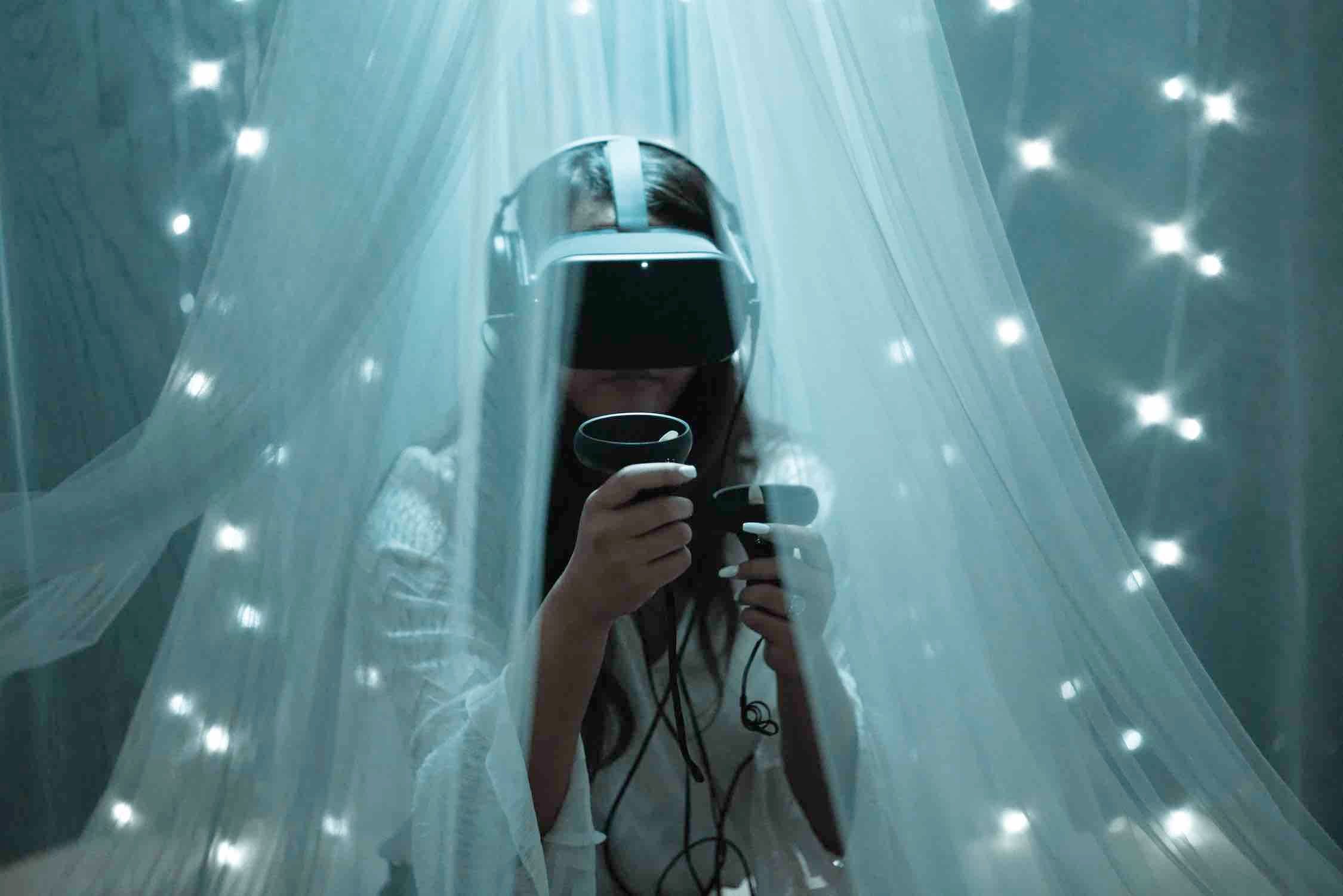
So have we reached peak video?
In some ways, we reached peak video when we learnt how to play moving visuals and sound in sync. Which happened in the early 1900s. But it was still expensive and out of reach to most for decades after that. Until the internet met smartphones. Within years, the making, distribution and creation of videos were within reach for anyone with a phone.
In the early days of digital video, it was mostly highly compressed landscape videos. Then, people started pushing the boundaries. First, with the aspect ratio. We saw the rise of square, vertical and even circular videos. This opened up endless possibilities for creators to use videos to engage audiences.
Everything from live streams to stories (like on Snapchat and Instagram) has an element of interaction. In a Live, viewers can interact with the hosts by commenting on it and getting acknowledged in realtime. In stories, people can tap through a narrative at their own pace, or answer polls and ask questions.
But some formats take the interactive element even further by letting the viewer choose what and where they want to be looking. Something like the Netflix Film Black Mirror: Bandersnatch. A movie version of the 'choose your own adventure' books like Goosebumps used to do. This format is becoming more accessible to users with tools like Interactr that lets anyone make videos where the viewer gets to decide which narrative they want to follow.
Fair warning: Most tools that let you make such advanced videos seem to require a subscription.
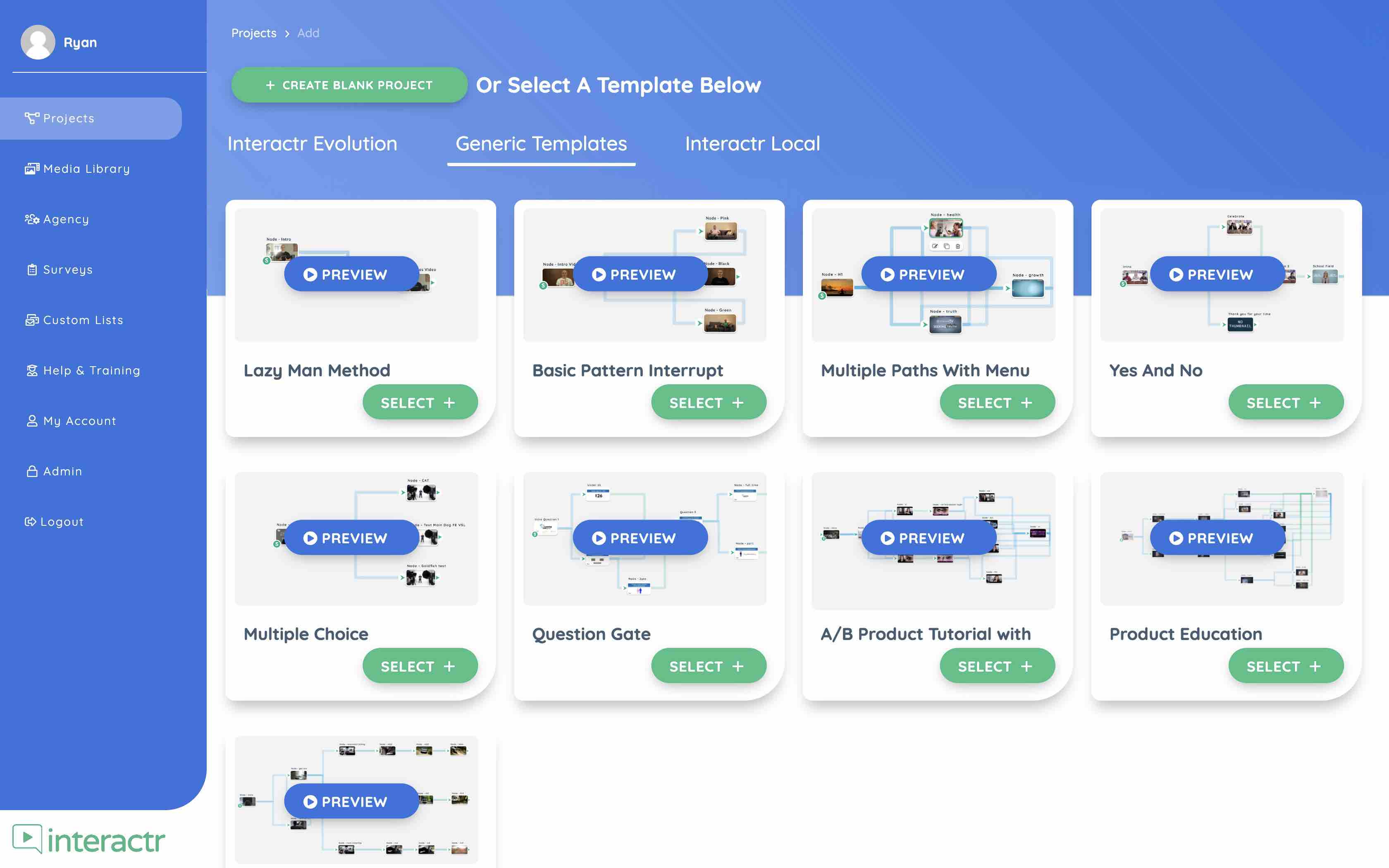
Social media sites and platforms might soon start exploring such formats too. And as we have seen with formats like 360-degree videos (where you get to choose the direction you want to look and explore a virtual environment through screens), live or stories, once a new format gains traction, all the platforms race to launch a version of their own. For example, Twitter just launched a Clubhouse-like audio feature called Spaces. And YouTube recently launched Shorts to compete with Reels and TikTok.
Platforms such as YouTube and Facebook are investing in formats like 360-degree video and VR. But because 360 and VR often require special hardware (like a headset), the adoption of these formats has been much slower; even though they've been around for years.
So what's next? Maybe a hybrid, like the tour of Lyon by Euronews that's a mix of 360-degree video and 'choose your own adventure.' For now, these stories are limited to websites because they require custom code or embedding. They can't be published directly on platforms with billions of users, which makes it harder for them to go viral and gain traction. So it might be a while before we see the next major innovation in the video. Or maybe, with new tools popping up, we're closer to it than it appears.
Hooked? Here's a video about VR for Journalism from a couple of years ago:

We have a lot of stories and behind-the-scenes from our Mobile Journalism fellows cued for release this month. Follow the release on our YouTube, Instagram, Facebook and Twitter feeds.
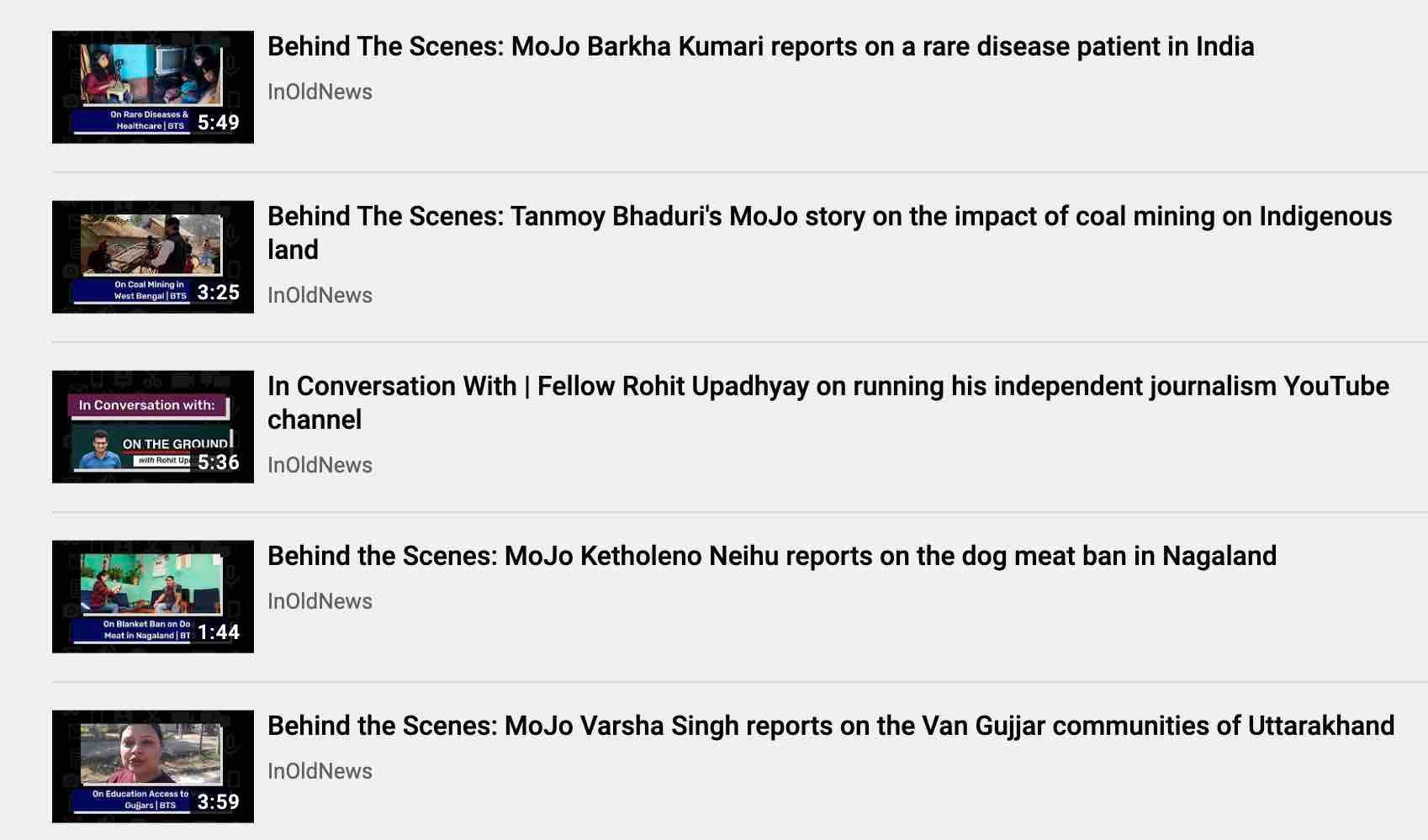

Dalit Desk is hiring interns

Journalismfunds.eu grants is inviting applications

Midday is hiring:
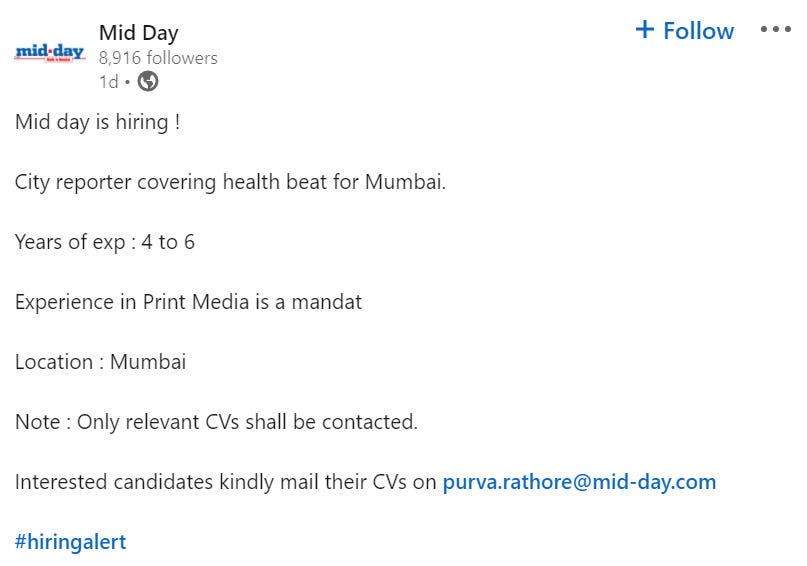
The Quint is hiring fact-checkers for WebQoof:
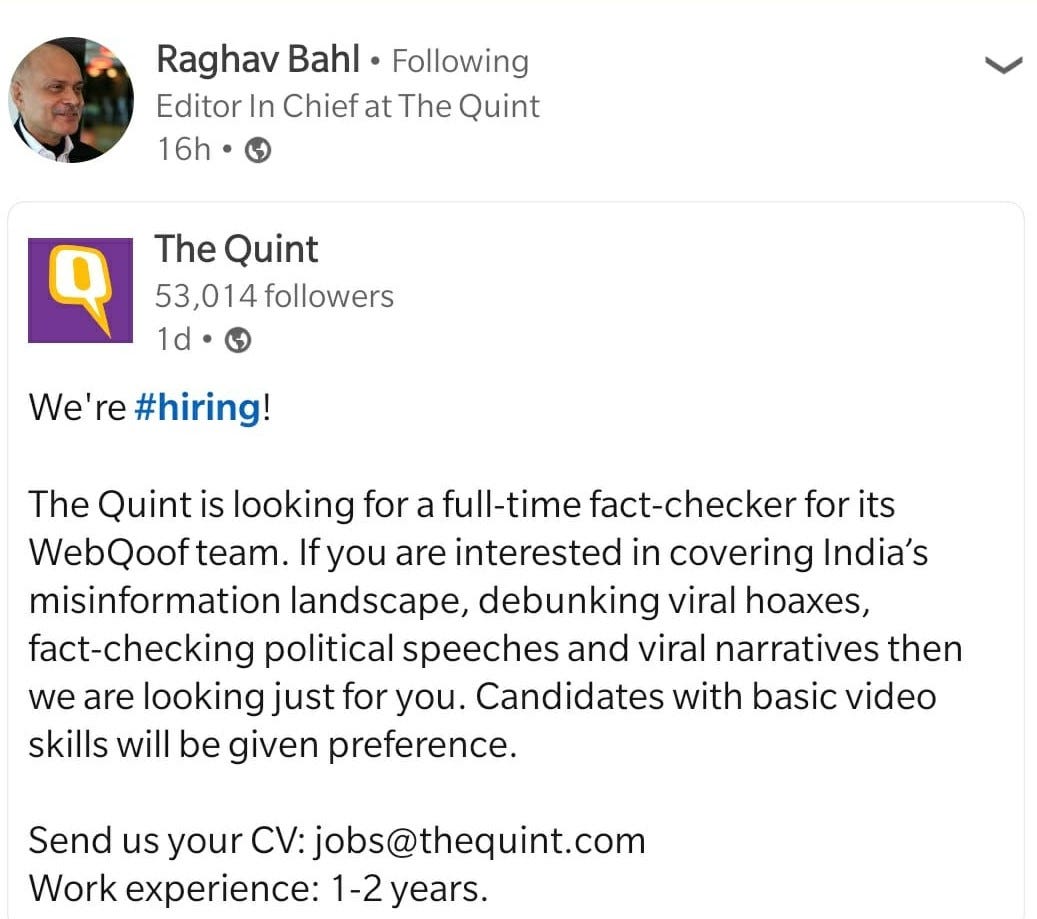
ABOUT THIS NEWSLETTER
This newsletter is an attempt to keep up and share all the latest and greatest stories in media and how they get done. Read about it here: About In Old News-Letter. And if you were forwarded this newsletter, here’s how you can sign up to get the latest editions as they come out!
